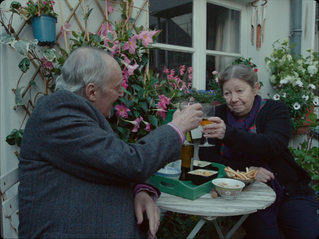Uncle Boonmee Who Can Recall His Past Lives
- Jonny Rogers
- Sep 18, 2021
- 3 min read
Apichatpong Weerasethakul, 2010

Every culture has its monsters; whether terrifying, savage, strange, or numinous, these creatures provide a way of talking about the unknown and the untamed. In most traditions, their residence is the wilderness: the further you travel outside the boundaries of civilization, through the dark woodlands beyond the walls of the city, the greater the danger you face. The boundaries between man and beast begin to blur; mortal and immortal; natural and supernatural.
Set in the mountainous forests of northeast Thailand, Uncle Boonmee invites us into a world in which spirits and talking animals live alongside humans; not as an aggressive presence that threatens their security, but as a natural part of a reality infused with magic and superstition.
The film’s loose and free-flowing structure centres on the titular character coming to terms with his approaching death, uncertain of what will follow. He laments, at one point, that his illness is a result of karma for killing communists while serving in the military. Contrary to what the title declares, however, Boonmee cannot remember his past lives - at least, not with any clarity.
One segment of the film features a disfigured princess rejecting the advances of a servant, before discarding her jewelry as she gives herself over to a talking catfish in the hope that she will be made beautiful again. It is uncertain whether this is a dream or a memory from a past life; Boonmee might well believe himself to have been the princess, the servant, the catfish, or something else entirely.
Perhaps the most memorable scene occurs near the beginning. Soon after the ghost of Boonmee’s late wife appears at the dinner table - and entering not with a bang but with a gentle fade - a red-eyed Monkey Spirit silently approaches from the shadows, claiming to be their son, Boonsong. Having been so captivated by a mysterious creature he had glimpsed in a photograph, Boonsong found himself transformed into a Monkey Spirit after mating with one.
Boonmee describes a dream in which a future civilisation is able to make ‘past people’ disappear by shining a light on them. A series of photos show an ape-like beast being chained by the military, while a group of teenage boys throw stones from a distance. This attempt to control the unknown erupts in an act of unseen violence, the subjugation of the sublime.
If there is any common thread between the disparate parts of the film, it’s that the boundaries of the human body and soul are in flux; characters might easily slip into the non-human domain through seduction by the forces of nature, whether conscious or unconscious. This is a realm of endless possibility, unshackled from the sobre rationalism of the technologised world that curtails creativity in servitude to its own conventions.
Weerasethakul invites us to view cinema as a kind of reincarnation, accumulating old ideas and memories as it takes on new forms. The film does not seek to explain or justify its metaphysics; rather, it delights in its playful absurdity, finding inspiration as much in the cheap costumes of B-movie horror monsters, historical dramas, and half-forgotten dreams as in local folklore, Buddhist traditions, and the collective trauma of Thailand’s turbulent past.
Despite, or perhaps because of, its languid pace and strange amalgamation of images, the film is at once comforting and unsettling. As magic becomes mundane, the material vitality of this world becomes magical; the white noise of flies, crickets, and birds calls us to recognise that we share our space with countless unseen creatures.
The film’s opening shows a water buffalo breaking free from a rope tethered to a tree and wandering into the forest. A man observes, and begins to follow. Likewise, I suggest you let the film roam and see where it takes you.








Comments